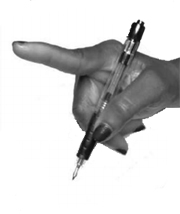1. Is it dystonia?
Myoclonus vs dystonia: brief reinforcement of dystonic posturing, often referred to as dystonic spasms, may occur in dystonia. Such dystonic spasms are simple in nature, brief in duration, and may have a shock-like appearance. As a result, distinguishing between myoclonus and dystonia may be difficult. If other features do not resolve the issue, determining the duration of contraction (by surface EMG (electromyography)) may determine that the dystonia spasm is of relatively longer duration than typical myoclonus1.
Chorea vs dystonia: chorea is random and unpredictable which distinguishes it from dystonia. The sustained muscle contractions resulting in abnormal postures or torsional movements which typify dystonia are unlike the movements of chorea.
Tremor vs dystonia: tremor may be difficult to distinguish from dystonia and there are 3 well defined tremor types found in dystonia:
-Dystonic tremor
-Tremor associated with dystonia
-Tremor seen in dystonia-parkinsonism
Comparison between major tremor types and dystonia may be found here.
A detailed review of Dystonic Tremor is found here.
2. Is it isolated or combined dystonia?
- Are there other hyperkinetic components: what kind(s) of involuntary movements are present?
- Are there hypokinetic components: what is the nature of any impairment of movement?
3. What has been the temporal course of the disease?
- Age at onset
- Sequence of development of neurological features: static or progressive
- Tempo of disease
- Variability
4. Body distribution
5. Activating conditions
6. What other systemic features are present?
7. What does the brain imaging reveal?
8. What are the results of other basic investigations?
9. Are other specialized investigations required (eg neurophysiology, urine metabolic screen, CSF examination)?
10. Classify the patient's dystonia syndrome using the List of Syndromes Table

